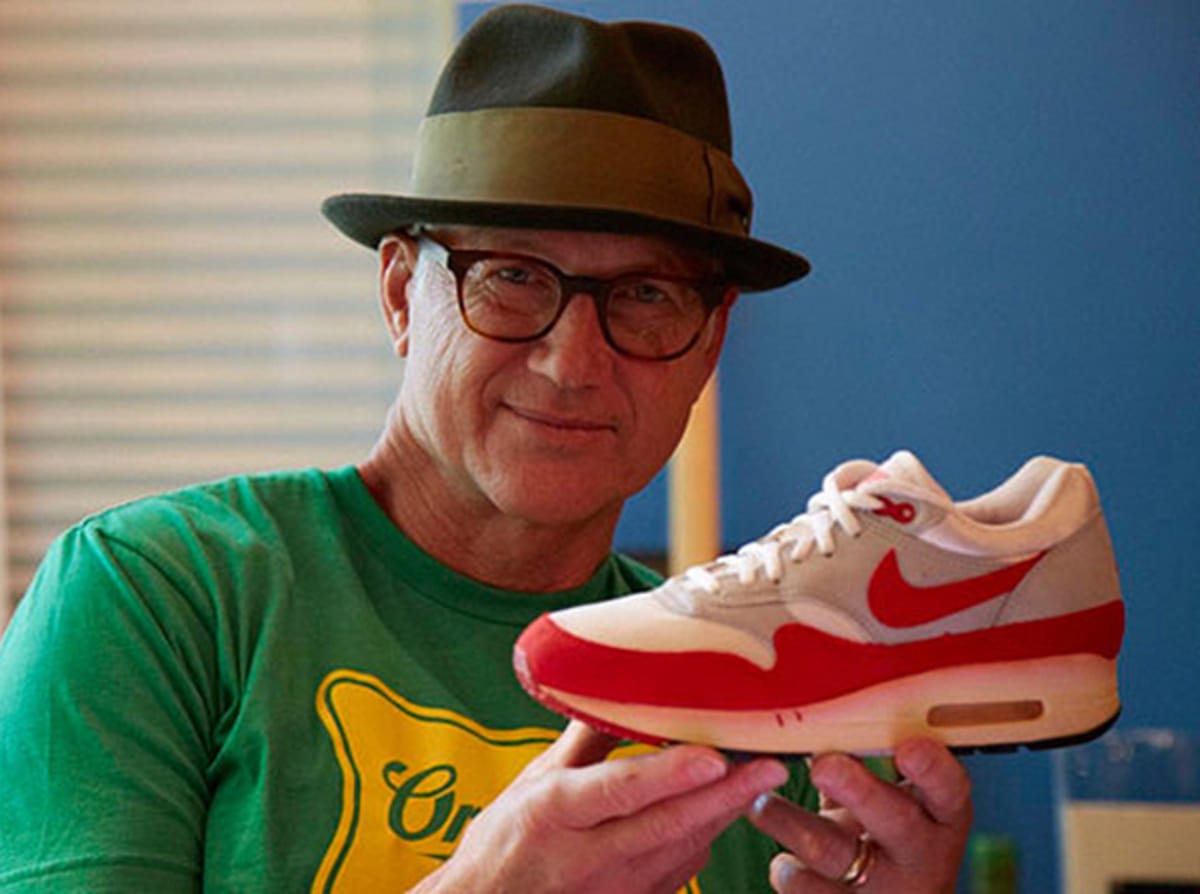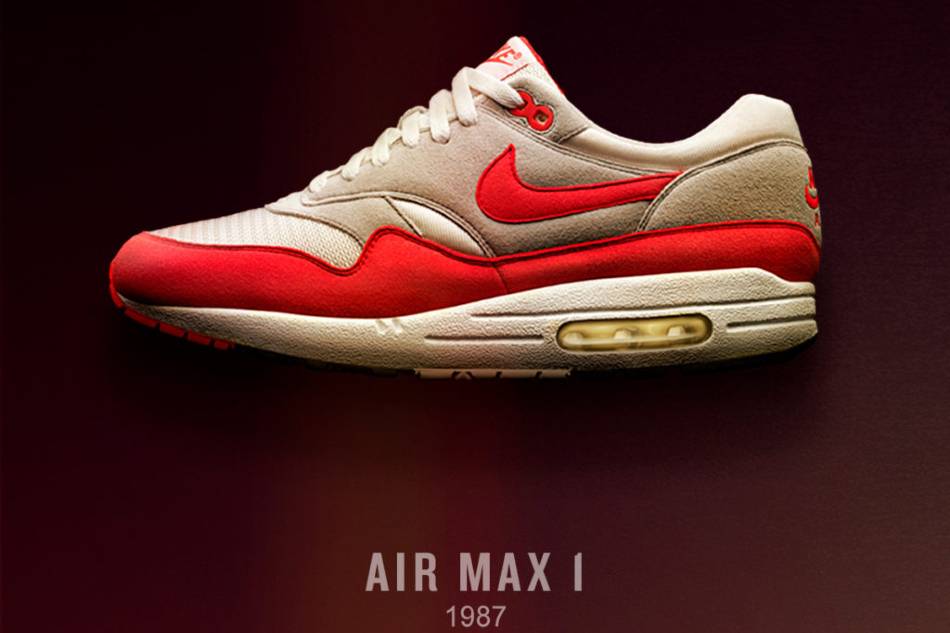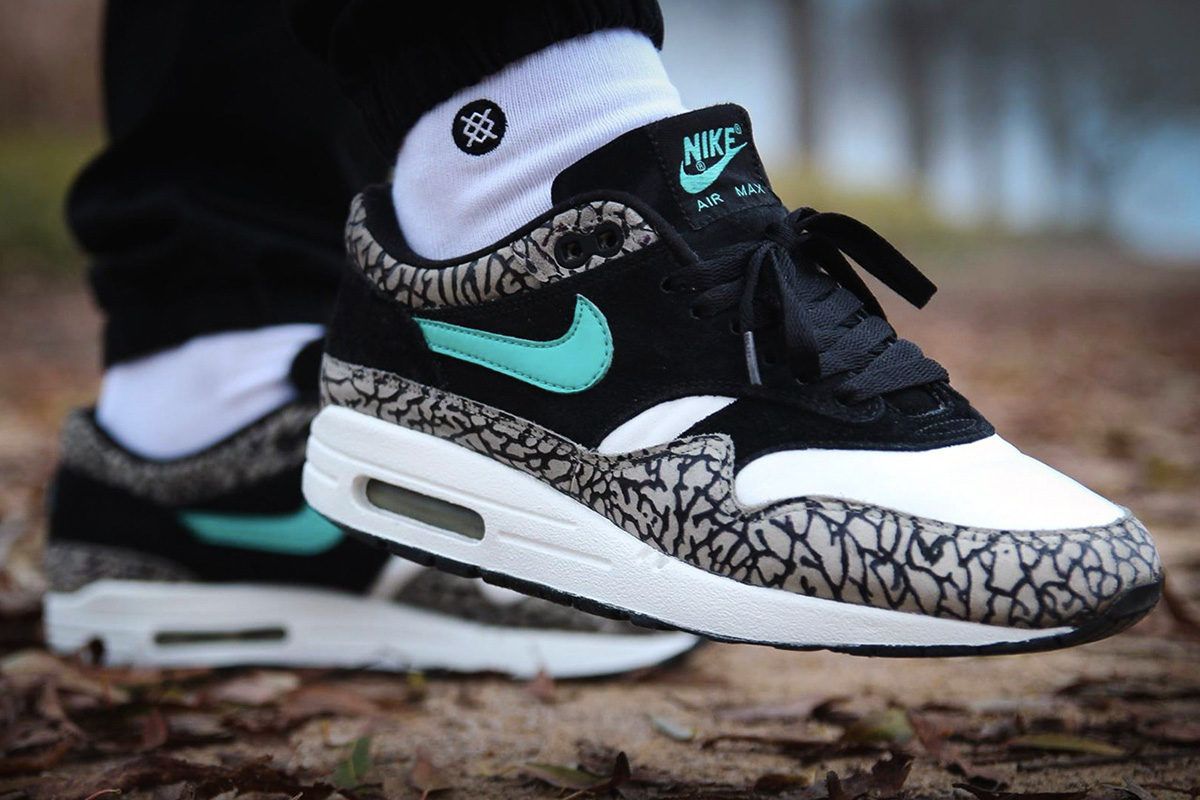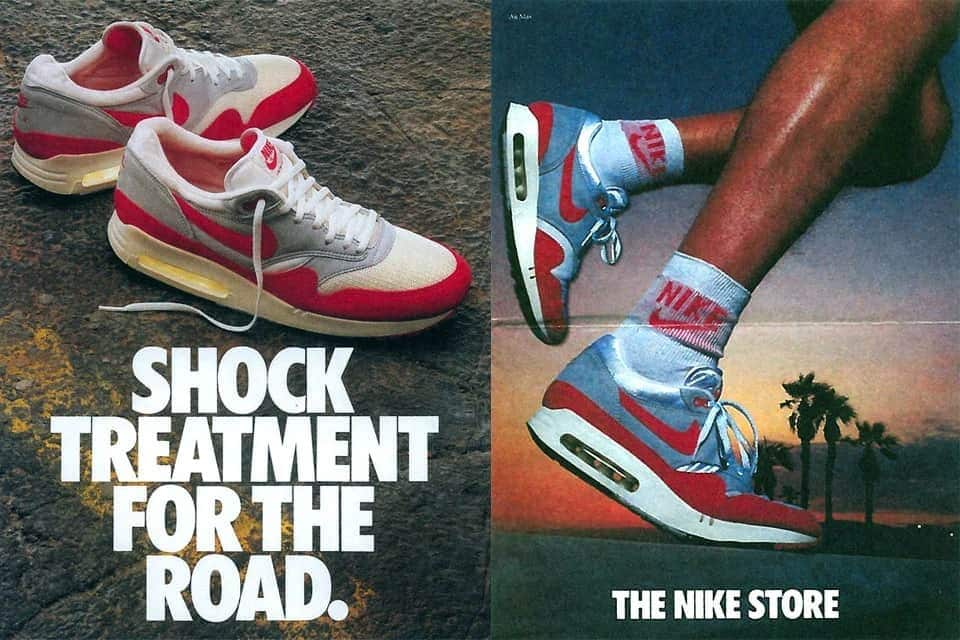The Nike Air Max 1 has catapulted into the highest echelon of the sneaker realm. Symbolic due to its historical relevance and sportswear impact, the Air Max 1 continues to be worn by many almost twenty five years after its initial inception. In hindsight, it’s easy to see how the AM1 ascended from former runner to lifestyle staple. So how did the ever-so popular silhouette become the shoe it is today?
From the past, we’re able to understand the development that has led to present time. The year is 1987 – an incredible year for culture, entertainment, and of course sneakers. Michael Jackson had just released his hit single BAD, The Simpsons animated cartoon had just made its television debut, and Nike had just dropped what would become the most iconic Air Max of all-time: the Air Max 1.
Tinker Hatfield: the mastermind of the Nike Air Max 1
When recalling the history of the Air Max 1, the story cannot be told without Tinker Hatfield. Tinker Hatfield, the legendary footwear designer that played roles in blueprinting the Air Jordan 1 and others, would go on to design the infamous Air Max pair. Initially, Hatfield was hired in 1981 by Nike as a corporate architect to design their Oregon campus. Fast forward to 1985, the designer transitioned over to sneaker design to help the struggling Nike compete with growing competitors. Out of his designs came the very first Air Max sneaker.

The early ’80s were a strong transitional period for Nike. Nike had ascended to a main competitor, quickly out-pacing brands like adidas, Onitsuka Tiger, and Puma. The formerly dubbed Blue Ribbon Sports company had established partnerships with various athletes, released iconic sneakers like the Nike Cortez and Nike Waffle Racer, and became the fastest growing footwear brand in the domestic United States.
During this time, Nike would takeover 50% of the U.S. athletic shoe market share, while also racing to become a one billion dollar company. Come 1985 however, Nike’s footwear sales began declining due to rising competition. Viewing this as a potential opportunity for much-needed innovation, Tinker Hatfield began developing the Air Max 1.
Nike’s Air technology takes flight
Nike’s proprietary Air technology wasn’t a new found innovation, rather it had already been in the works for years. Frank Rudy, a former NASA employee, discovered how to place gas inside the soles of sneakers. Air technology debuted in the 1978 Air Tailwind. Air was a revelation for cushioning systems, replacing the age-old molded EVA soles with gas pumped urethane pouches. Runners loved the light, bouncy cushioning. However, the general consensus was that people had decided that the soles were better suited unseen. Hatfield was set to change that.

Air Max 1 OG Red. Image Credit: Sneakers Magazine
It wasn’t as if Hatfield had magically sprung up with the visible Air solution. Rather, it was his time in Paris that inspired the design. Specifically, it was a controversial building named the Centre Georges Pompidou, one that scored an abundance of eye rolls and verbal disdain. “I don’t know if I was thinking, well now I’m going to design a shoe based off of this,” Hatfield said in the documentary series Respect the Architects. “I just remember being super influenced by it and having my architectural senses turned upside down.”
Hatfield is referring to the building’s nontraditional build, with all of its functional and structural elements placed on the outside for external viewership. Had he not seen the building, perhaps he would have never known to make the Air unit visible: “I thought let’s make the bag a little bit wider, make sure it’s stable, but then let’s go ahead and remove part of the midsole so we can actually see it.”
While Hatfield developed his idea into creation, Nike had begun to look elsewhere. The sportswear brand had become adamant on shrinking the Air technology due to fears that a visible unit would be structurally fragile or easily punctured. In a future documentary entitled Abstract: The Art of Design, Hatfield proclaimed that Nike was looking to fire his design team. Luckily, Hatfield was backed by Director of Cushioning Innovation David Forland. Hatfield’s confidence in his designs was sky-high, but even he couldn’t have predicted the incredible impact the Air Max 1 would have on sneaker history and culture.

Tinker Hatfield and the Nike Air Max 1 OG
1987: the year it all began
On March 26, 1987, Nike released their first visible Air unit sneaker: the “Infrared” Air Max 1. In succession, the Air Max 1 was debuted on Nike’s first ever television advertisement. The Air Pack, which also featured silhouettes like the Air Trainer 1, Air Sock, Air Safari, and Air Revolution. Around the time of release, Forland was visiting an airport and recalled seeing someone wearing the Air Max 1. “Somebody bought them. I see the Air-Sole going up and down!’ It was a big risk, but bigger reward.”
Today, the Nike Air Max 1 is known as one of the most significant sneakers to release. We continue to see new Air Max iterations come to life, including past iterations like the Air Max 90, Air Max 95, Air Max 97, VaporMax, Air Max Plus, and Air Max 2090. However, no Air Max will ever have the symbolism and importance that the “Infrared” Air Max 1 has had. Homage pairs, including a Nike Air Max 1 “Sketch To Shelf University Red”, pay tribute to Hatfield’s original sketches. Easy to wear, versatile for any setting, the Air Max 1 has become special in its own right.

Since inception, the Nike Air Max 1 has released in many prominent colorways. The original “Infrared” scheme sticks out as a popular winner, along with its OG “Sport Blue” brother. Additionally, the 2006 CLOT x Nike Air Max 1 “Kiss of Death” pushed the boundaries of sneaker design. Details surrounding the ancient Chinese art of pressure points made way across the silhouette. Additional Chinese symbolism and a controversial clear toebox elevated the CLOT collaboration to Air Max Hall of Fame status.
Following up their 2006 product, the Air Max 1 was tagged by Japanese brand ATMOs for an iconic “Elephant” makeover. One of the first non Air Jordan 3 sneakers to use the pattern, it perfectly contrasted the white leathers, teal accents, and black suedes with the popular animal print. Many recall this Air Max to be the best of all time.

In 2009, the silhouette was tapped by Dutch brand Patta for a bright “Chlorophyll” colorway. While the collaborative effort didn’t sell as well as predicted, the limey green color used and OG colorblocking distinguished the sneaker from its peers. Other great pairs include the “Forest Green” iteration and “Obsidian” iteration.
The Nike Air Max 1 continues to receive incredible love today. Without a doubt, the silhouette has ascended to an all-time Nike great along with pairs like the Air Jordan 1 and Air Force 1. Some could even refer to the sneaker as the one that started it all, spawning the now vast Air Max catalog. Luckily for Air Max fans, the annual Air Max day provides Nike with an opportunity to release coveted silhouettes and consumers with an opportunity to purchase them.
If interested in copping a pair, head on over the Nike.com.

